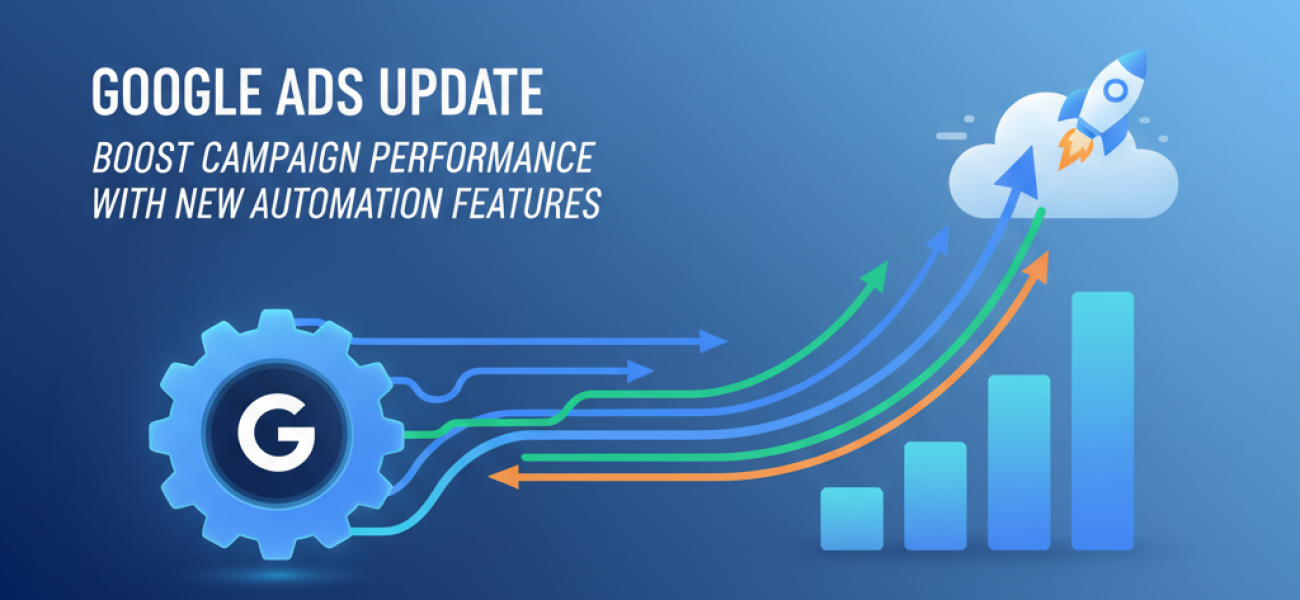The Google Ads update brings significant advancements in automation and AI marketing to help advertisers enhance campaign performance. These improvements include enhanced bidding optimizations and creative tools specifically designed to boost YouTube advertising efforts during high-demand seasons.
Overview of the Latest Google Ads Update
In the evolving landscape of digital marketing, Google continues to integrate innovative automation features aimed at optimizing campaign outcomes. This update introduces enhanced bidding strategies that leverage machine learning to adjust bids more precisely based on real-time data. The new creative tools empower advertisers to develop more engaging content tailored for platforms like YouTube, where video advertising demand is peaking.
Historically, advertisers have struggled to balance bid management and creative testing simultaneously. With Google’s latest enhancements, these processes are becoming more seamless and interconnected. For instance, the bidding algorithms now incorporate performance insights from creative assets to allocate budgets more effectively. This fusion of automation and creative enhancement is poised to redefine campaign performance benchmarks.
How Automation and AI Marketing Elevate Campaigns
Automation in Google Ads is no longer limited to basic rule-based triggers. The integration of AI marketing techniques allows for predictive analytics that forecast which ad placements and bids will yield the best returns. Brands adopting these updates can experience efficient budget utilization and improved ROI without constant manual intervention.
“The automation update enables advertisers to focus on strategy while AI handles mundane optimization tasks,” says digital marketing expert Jenna Michaels. “It’s a game changer for those managing extensive campaigns across multiple channels.”
Moreover, Slack alerts and real-time notifications tied to campaign performance metrics give advertisers immediate insights. This proactive approach to monitoring means businesses can react swiftly to emerging trends or underperforming segments, further fine-tuning their advertising strategies.
Enhanced Bidding Optimizations Explained
The new bidding optimizations encompass machine learning models that integrate various signals like device type, location, time of day, and audience behavior. These multi-dimensional inputs enable bids to adjust dynamically, ensuring maximum efficiency. For example, during the holiday season when YouTube demand surges, bids for video ads are automatically increased where they show higher conversion potential.
Additionally, conversion goals can now be set with greater specificity, allowing advertisers to prioritize actions such as app installs, website purchases, or online reservations. The automated system then calibrates bids to meet these personalized objectives, streamlining campaign management.
Comparing Previous and Current Bidding Approaches
Previously, bidding strategies often relied on manual rules or simple automated settings with limited contextual awareness. The Google Ads update represents a leap forward by using AI to continuously learn and adapt based on campaign outcomes. This results in smarter budget allocation and improved campaign pacing, especially during peak digital marketing periods.
Creative Tools to Boost YouTube Performance
Beyond automation, the update includes creative tools tailored to video advertising. These tools simplify the process of testing multiple ad variations and formats, providing insights into which creative elements resonate best with target audiences. Advertisers can experiment with different thumbnails, calls to action, and video lengths without significant resource expenditure.
These enhancements recognize the shift toward video as a dominant medium in digital marketing. By integrating creative improvements with automated bidding, Google Ads now offers a holistic approach to campaign optimization for YouTube advertisers.
Example Use Cases and Best Practices
Consider a retail brand preparing for the holiday shopping surge. Utilizing automated bidding with AI-driven signals, the brand can allocate more budget toward ads demonstrating higher engagement on YouTube. Concurrently, the creative tools allow quick iteration of promotional videos to identify the most effective messaging.
Industry leaders advise setting clear conversion goals before activating these features to maximize benefits. Monitoring Slack alerts tied to campaign metrics enables real-time awareness and responsiveness, a critical factor in competitive advertising markets.
Implications for Digital Marketers and Advertisers
Digital marketing professionals must adapt to this paradigm shift that Google Ads introduces through its update. Embracing AI marketing and automation will become essential to remain competitive. These features reduce manual workload while delivering data-driven decisions that enhance campaign performance.
Marketers can visit the official Google Ads update page at https://ads.google.com/home/resources/updates/ to explore detailed documentation and tutorials, ensuring smooth adoption of the new tools.
“Automation paired with creative flexibility opens new doors for campaign success,” notes digital strategist Marcus Lee. “Tools like these empower teams to be agile and data-informed, transforming how advertising goals are achieved.”
Conclusion
The recent Google Ads update delivers a comprehensive suite of advancements, focusing on automation, AI marketing, enhanced bidding, and creative tools designed for platforms like YouTube. These features collectively aim to maximize campaign performance during critical marketing periods. Advertisers leveraging these innovations can expect improved efficiency, stronger results, and an enhanced ability to respond rapidly to advertising news and market trends.
Staying informed and integrating such updates within digital marketing strategies will help brands capitalize on new opportunities while maintaining cost-effective campaign management.

